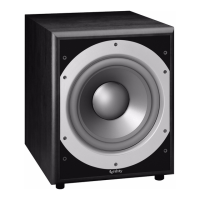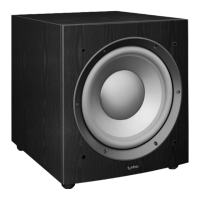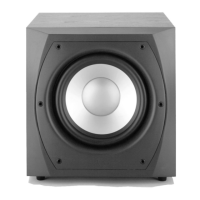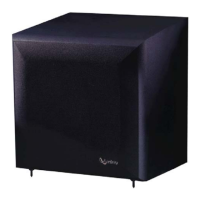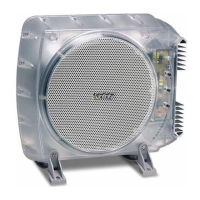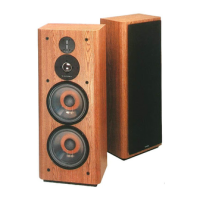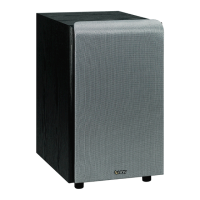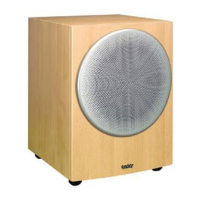INTRODUCTION
Kappa Perfect VQ Series subwoofers
are unique because they provide
variable Q. Q adjustments may
allow the subwoofer to be optimized
for a particular enclosure or applica-
tion and may provide the user with
optimum performance for several
applications in a single enclosure.
The frequency response of every
speaker includes three distinct regions
characterized by flat amplitude (pass-
band), high-frequency attenuation
(stopband-high) or low-frequency
attenuation (stopband-low) (see
Figure 1). Midrange speakers and, to
a lesser extent, tweeters are used to
reproduce frequencies in the region
where they exhibit flat frequency
response. Subwoofers, on the other
hand, are used in a region of low-
frequency attenuation, but those low
frequencies are what we want the
subwoofer to reproduce. Subwoofer
system design is almost entirely
an effort to extend the region of
flat response to the lowest possible
frequency or to shape the frequency
response in the band of reproduced
frequencies. Qes and, consequently,
Qts are the parameters that best
describe the behavior of a subwoofer
in the range of frequencies it is most
often used to reproduce.
2
A FEW WORDS ABOUT
POWER HANDLING
The power-handling capability of any
woofer is related both to its ability to
dissipate heat and to the maximum
excursion limits of its suspension.
Once the speaker’s voice coil moves
outside the magnetic gap, power
can no longer be converted into
motion and all the amplifier’s power
is converted into heat in the voice coil.
Voice-coil heating is the greatest
detriment to speaker longevity, so
overexcursion should be avoided.
Since excursion characteristics are
very different for each type of
enclosure, power handling will be
different for each enclosure type.
Sealed enclosures exert the most
control over the motion of the sub-
woofer at the very lowest frequencies
because the air inside the box acts
as a spring, opposing the motion
of the woofer’s cone. Larger boxes
allow more excursion, providing more
low-frequency output than the same
woofer in a smaller box, for any input
power level. When placed in a sealed
box much larger than the equivalent
compliance (Vas) of the subwoofer,
it will perform as if it were in an
infinite-baffle application, with the
attendant lower excursion-limited
power handling.
Vented and bandpass enclosures allow
the least excursion for the amount
of sound output (near and above the
resonance frequency of the enclosure).
The mass of air contained in the
port provides an acoustic load to the
woofer’s cone at the tuning frequency,
and this added mass decreases
excursion so that the subwoofer’s
motor is, essentially, coupled to the
air in the port. Vented boxes do not
provide adequate control below the
frequency at which the box is tuned,
so proper design and a subsonic filter
are important. A vented bandpass box
will allow the least cone excursion,
provided a subsonic filter is used.
Infinite-baffle, or “free air,” mounting
allows for greater excursion than does
mounting subwoofers in enclosures.
The power handling of a subwoofer
mounted in an infinite baffle will be
reduced by nearly half its rated-power-
handling spec.
Voice-coil overheating and burning
have only one cause – exposure to too
much power for too long. An amplifier
driven into severe clipping or square-
wave can output much more average
power than the average power of a
clean sine wave of the same level.
Audible distortion in the sound is a
clear indication of amplifier clipping
and should serve as an indication that
your speakers may be in danger of
being damaged.
VARIABLE Q (PATENT PENDING)
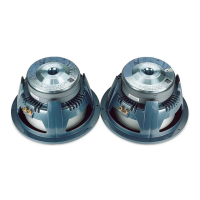
